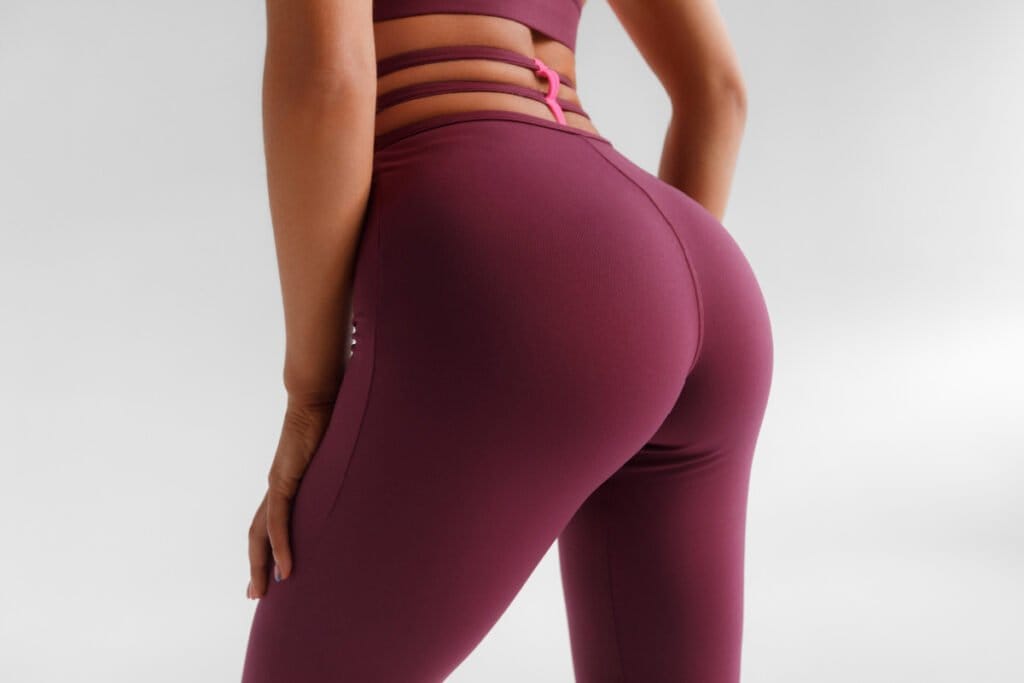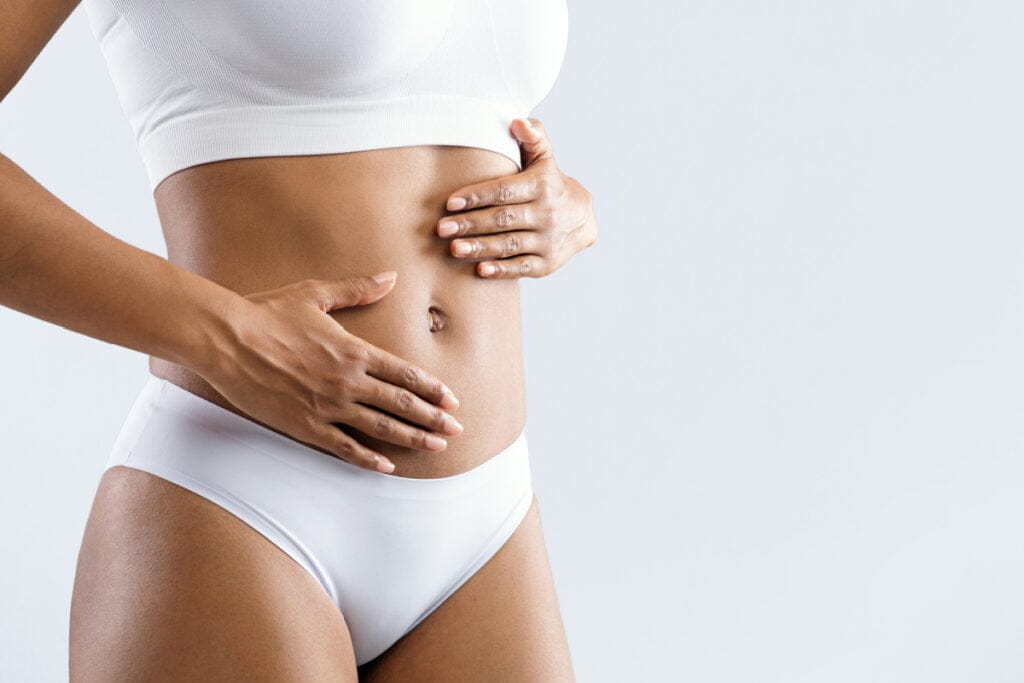Is there a weight requirement to get a fat transfer?

Fat transfer offers patients a more natural way to enhance and reshape various areas of their body, and a common question among patients interested in this option is if there is a certain weight requirement. The answer isn’t as simple as yes or no, so today Bellevue’s top triple board-certified cosmetic surgeon Dr. Alex Sobel is sharing details to help you better understand if natural contouring with fat transfer is right for you, including general weight guidelines.
Dr. Sobel has personally contributed to the research and development of safe and effective fat transfer procedures, making him uniquely qualified to weigh in on this topic.
What is fat transfer?
Fat transfer is a surgical procedure where a patient’s fat is harvested from one area of the body, carefully processed, and then reinjected into another area to enhance or reshape it. This procedure is also known as “fat grafting,” “autologous fat grafting,” “autologous fat transfer,” “lipotransfer,” or even “liposculpting.”
Common types of fat transfer procedures
- Lip lifts and lip augmentation use fat grafting to volumize and shape the lips.
- Facial fat grafting restores facial volume to achieve a more youthful appearance.
- Brazilian butt lift (BBL) transfers fat to the buttocks to create a shapely, fuller appearance.
- Breast surgeries such as breast augmentation, breast reduction, breast lift, breast lift with augmentation, breast implant removal, or breast reconstruction may incorporate fat transfer to enhance the breast size and shape.
General weight guidelines for fat transfer candidates
There is no specific weight requirement for fat transfer procedures; however, patients should ideally be within a healthy weight range; it’s also acceptable for fat transfer patients to be slightly overweight.
The amount of fat you’ll need for a fat transfer will depend on the specific procedure you desire, your unique anatomy and physiology, and if you’d like to see subtle results or a more noticeable enhancement. This amount generally ranges from a few ounces to several pounds.
For example, depending on the desired size and shape of the buttocks, your cosmetic surgeon might need to harvest and transfer anywhere between 200cc to 1300cc (approximately 0.44 to 2.87 pounds) of fat or more per side for a BBL. On the other end of the spectrum, much smaller amounts of fat, usually between 10cc to 100cc (approximately 0.02 to 0.22 pounds), are used in facial fat grafting to restore volume and enhance facial features.
A board-certified cosmetic surgeon who specializes in fat grafting will assess your goals and consider anatomical factors to determine if you have sufficient fat stores to achieve the results you are looking for.

Extremely underweight or obese individuals may not be suitable fat transfer candidates.
The importance of maintaining a stable weight
Maintaining a stable weight before and after your procedure is vital to enjoy long-lasting fat transfer results. Significant weight changes can negatively affect fat graft survival and your overall results.
Factors affecting fat transfer candidacy
Dr. Sobel considers several factors when determining if his Bellevue and Seattle-area patients are good candidates for a fat transfer procedure based on the following considerations.
Body Mass Index (BMI)
A healthy or slightly overweight BMI typically indicates a patient has sufficient fat reserves for a successful fat transfer. Patients with a BMI over 30 may not be ideal candidates for plastic surgery procedures as complication rates increase with higher BMIs.
- Below 18.5: Underweight
- 18.5 to 24.9: Healthy/Normal weight
- 25.0 to 29.9: Overweight
- 30.0 and above: Obese
However, BMI is not an accurate indicator of health, and many patients with high and low BMIs are good candidates and benefit greatly from fat transfer.
Quality and quantity of donor fat
Your weight plays a role in fat transfer procedures, affecting both the quality and quantity of donor fat. Your cosmetic surgeon will be able to tell you if you have enough harvestable fat to achieve the level of enhancement you desire.
Overall health and medical history
Patients should be in good overall health, with no underlying medical conditions that could increase surgical risks, impact healing, or limit pleasing aesthetic outcomes.
Expectations and goals
When it comes to fat transfer procedures, patient satisfaction greatly depends on having realistic expectations. This is because the results are typically conservative; additionally, shaping of both the donor and transfer locations must be considered. An experienced cosmetic surgeon will be able to explain how much change you will see with a fat transfer procedure, potentially using digital imaging, and help you fully understand the pros and cons of all your options.
For example, if you are considering fat transfer to the breast, but looking for a substantial size increase, your surgeon may recommend placing implants to achieve a more dependable and stable breast size increase.
Where can the fat be taken from for a fat transfer procedure?
Fat can be harvested from various areas; your body composition and preferences will help guide this decision. The primary goal is to obtain enough high-quality fat for optimal graft survival. Common donor sites include:
- Abdomen
- Flanks (love handles)
- Thighs
- Hips
- Lower back

What if I don’t have enough fat?
If you don’t have enough harvestable fat for a successful fat transfer procedure, there are a few alternative options you can consider:
- Please do not gain weight. Your cosmetic surgeon may recommend that you gain some weight through healthy means; however, this situation is relatively rare. One of the greatest strengths of body image-affirming procedures is to help patients maintain a healthy lifestyle—increasing body fat for a fat transfer procedure is at odds with this important principle. Thus, weight gain should only be reserved for those whose metabolism is unhealthy and in consultation with a dietician, primary care physician, and often with behavioral medicine support to increase your metabolic health before having a procedure.
- Alternative treatments. If you’re not a suitable candidate for fat transfer, your surgeon may recommend other non-surgical or surgical treatments to achieve your desired results:
- Dermal fillers can add volume and contour the face, hands, and other areas.
- Silicone or saline breast implants are a safe and effective alternative to fat transfer for breast augmentation.
- Facial implants add volume and definition to enhance your features.
- Buttock implants can be placed to achieve a lifted, more shapely buttock appearance.
- Combination procedures: Your surgeon may suggest using a staged process including fat transfer as well as dermal fillers to achieve the desired volume and contour in certain areas.
Looking for fat transfer options in Seattle, WA?
Dr. Alexander Sobel at Anderson Sobel Cosmetic Surgery specializes in fat transfer procedures and has decades of experience providing the most natural-looking results. Dr. Sobel, along with his outstanding medical team and friendly staff, proudly serve patients in the Bellevue and Seattle areas and regularly welcome out-of-town patients. We would be happy to meet with you, discuss your goals, and explain your fat transfer options. Schedule your personal consultation today by calling (425)453-9060, or contact us online to get started today!